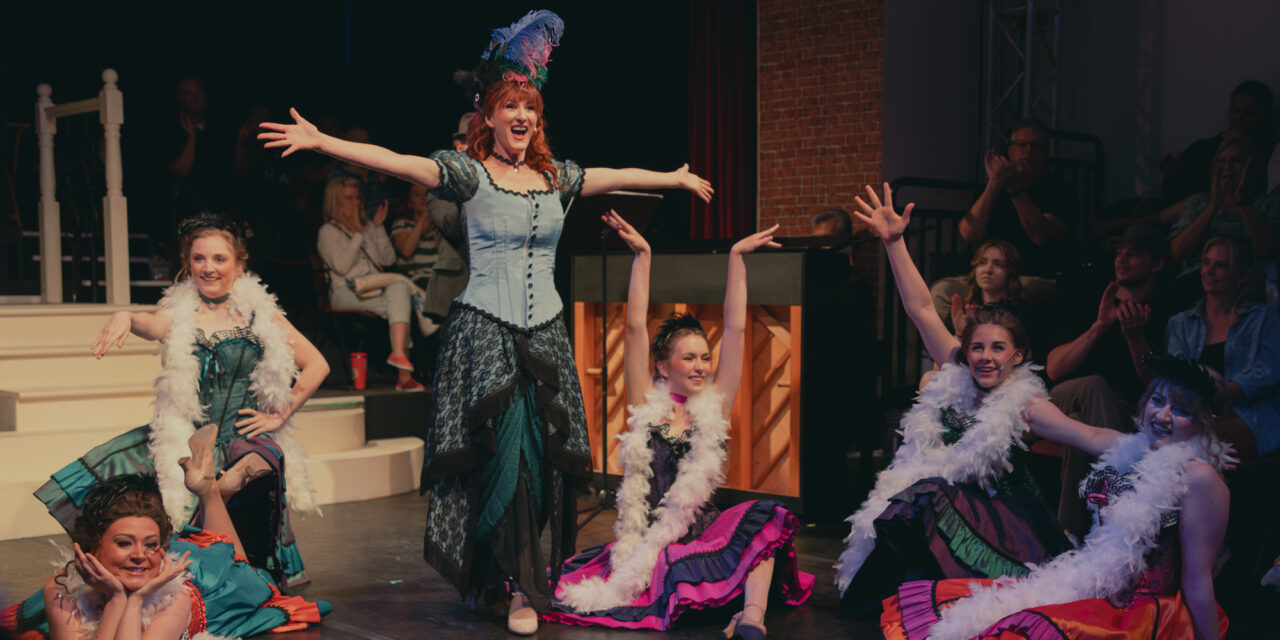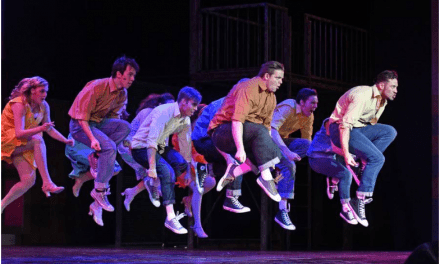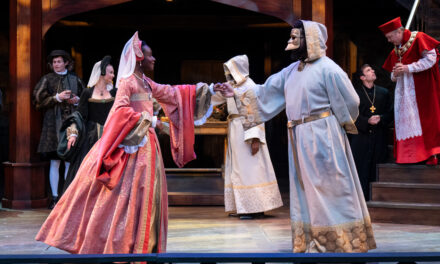ST. GEORGE — After witnessing the unparalleled performances by the actors, singers, and dancers in St. George Musical Theater’s rendition of Funny Girl, there is little chance anyone will be raining on this parade.
Following the sweeping, emotional journey of Fanny Brice, one of the great comedic actresses of the early-to-mid-twentieth century. Funny Girl, written by Isobel Lennart, from the original story by Miss Lennart, with music by Jule Styne and lyrics by Bob Merrill, is an absolutely riveting piece of theatrical art. The show has recieved numerous Tony awards and the original cast recording is enshrined in the Grammy Hall of Fame. All this adulation begs the question as to why it is not produced more often in community or regional theater realms.
Although somewhat anecdotal, Bruce Bennett, St. George Musical Theater’s president and artistic director, offered his thoughts on the matter prior to the production, citing a few hurdles that could explain why this is the first time Southern Utah audiences have been exposed to this musical in more than 30 years.
“It can be tough to get the rights to the show,” Bennett said. “But even more challenging, particularly for community theaters, is the fact that they do not allow you to use instrumental music tracks, it all has to be performed live.”
The third hurdle, in Bennett’s estimation, is the fact that Barbara Streisand’s stage and film portrayal of the lead role looms so large in people’s minds it can be difficult to find another actress to live up to the task. Somehow, St. George Musical Theater’s latest production, under the skillful direction of Richard Bugg, manages to clear all of these hurdles by relying on the most basic building blocks of theater — storytelling and high-quality acting, with an exceptionally skilled pianist and one particular vocal talent that will turn even the staunchest Streisand fans’ heads.
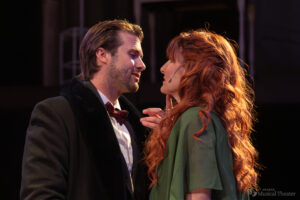
Funny Girl plays at St. George Musical Theatre through June 15.
Taking on the role of Fanny Brice, Brooke Bang moves the audience through the ups and downs of this iconic actress’s life with a confidence and playful humor that simply has to be seen. From her youthful exuberance on “I’m the Greatest Star” to the starstruck, “Nicky Artnstein, No. 1” and ultimately the passion-filled “People”, Bang embodied every aspect of this character with a natural, playful ease that made it difficult to look away anytime she was in view — despite a lot of other great things happening on stage.
Most notable of the other onstage talent was the nearly constant presence of Paul Taylor’s piano music, which served as the accompaniment for all of the songs and provided background and transitional music throughout the show. His exceptional skill offered all the nuance and flavor of a live musical performance, while at the same time being accurate and steady enough to almost make the audience forget these aren’t the typical pre-recorded tracks of community theater. His music featured a variety of high points, but when he was joined by Nick Lanners on trumpet and Bang on vocals in “Cornet Man,” it became a trifecta of a musical talent, tempered only by the lack of acoustical balance between some of the vocals and the musical accompaniment. Here’s hoping the new theater space currently in the works for SGMT will take care of some of these recurring structural issues.
Playing counterpart to Bang in her role as Fanny Brice, Dan Fowlks turned in an excellent version of love interest Nick Arnstein. His personal charisma and on-stage chemistry with Bang, most notably on numbers like “You Are Woman, I Am Man” and “I Want To Be Seen With You Tonight”, made him enjoyable to watch, and very believable in the role.
Possibly even more enjoyable, however, was Brennan Walters in his role as Eddie Ryan, devoted friend, and advocate for Fanny. Walters proved time and again to be remarkably light on his feet, tap dancing his way up and down a pyramid of steps on “Eddie’s Fifth Encore” and throughout the show. I was transported via music and dance during “Who Taught Her Everything”, a number shared by Eddie and Mrs. Brice (played delightfully by Heather Braden) and was moved by his genuine caring nature.
As with most musical productions, Funny Girl is not carried by the strength of its leading roles alone. The ensemble in this production showcased its strength in vocals and dancing on pieces like “Henry Street,” “Rat-Tat-Tat-Tat” and “Sadie, Sadie.” The story would not have been as enjoyable without the humor interjected by Mrs. Strakosh, played by the always enjoyable Jane Williams, and Mrs. Brice during their poker games and throughout the rest of the show.
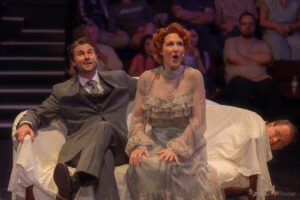
While the costume department, headed by Staci Martin, did well keeping up with the numerous costume changes and period pieces, there was one element in the ensemble that was overlooked, but easily changed. The nose ring, worn by one member of the ensemble, was a modern-day touch that simply didn’t belong in the era, and should be removed before stepping on stage in a time-period piece.
One other element that is worth a note. In a world of QR codes and digital programs, I appreciate St. George Musical Theater for hanging onto the printed playbill. I know it costs more, but the printed program allows you to keep an eye on the upcoming musical numbers and more, without pulling out the distracting light of a cell phone. It’s just one subtle way to keep the integrity of the theatrical experience alive.
From opening to close, this is a production worth seeing — both for the rarity of the opportunity to see it performed live, but also for the skillful storytelling that will leave you wanting even more.

